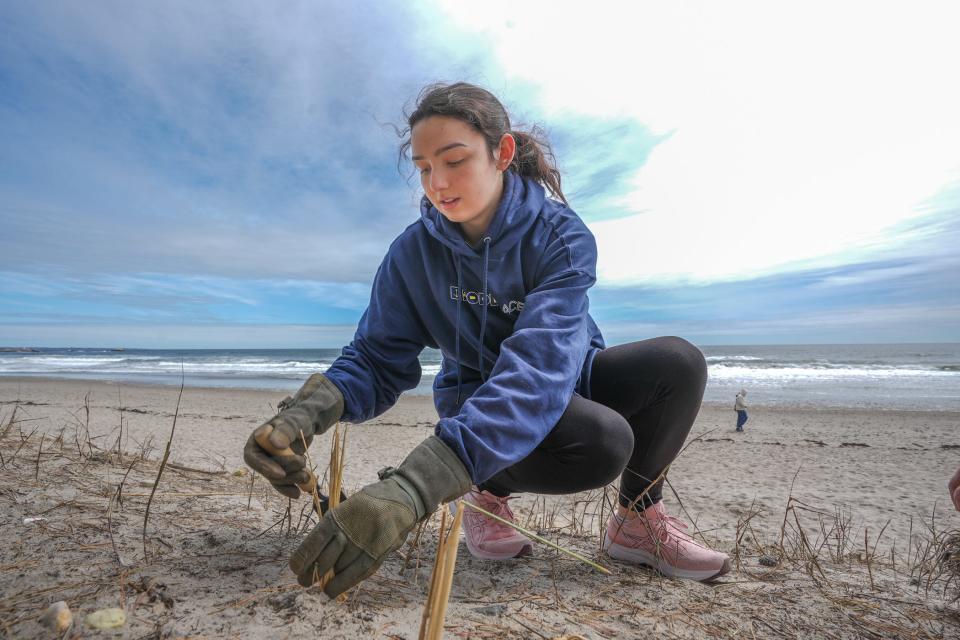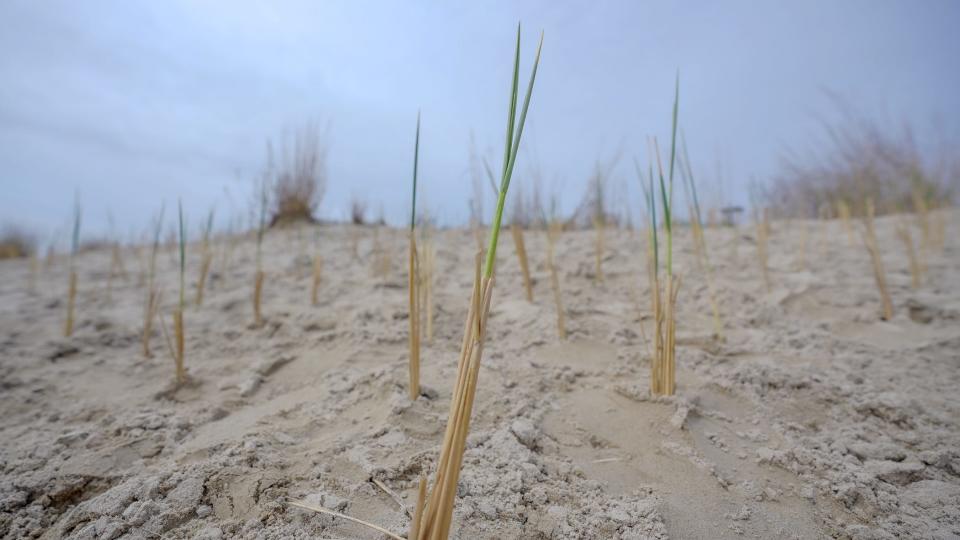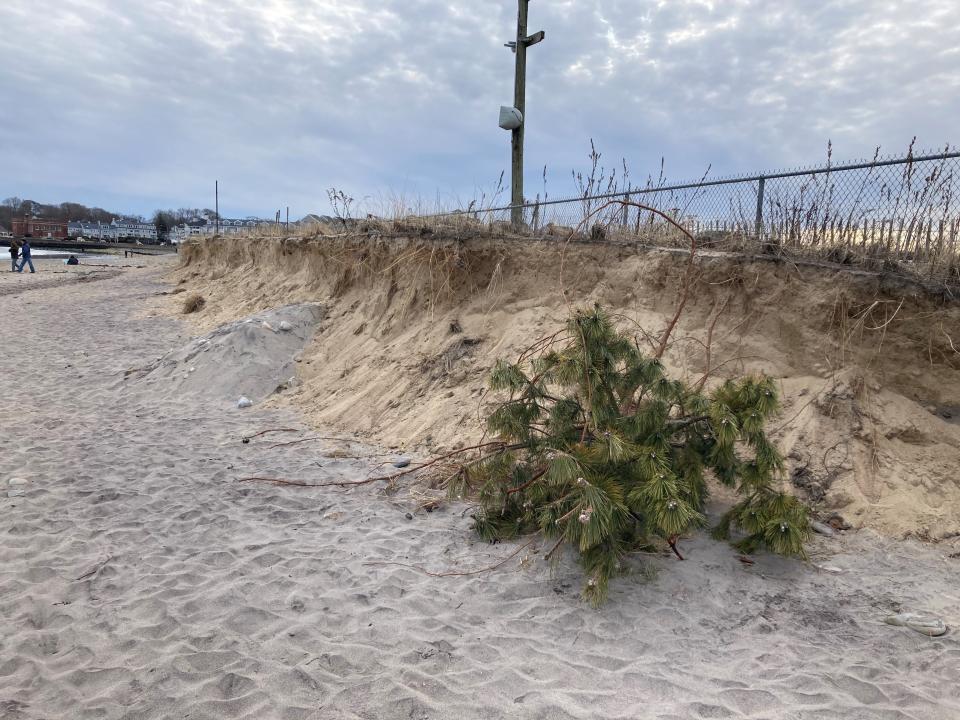Largest sand replenishment since Sandy underway at Narragansett Beach – but will it last?
NARRAGANSETT – On a chilly, gusty morning, a crew of volunteers bent over the sand near Narragansett Town Beach’s South Pavilion. In their hands were bunches of green grass, which they carefully planted at even intervals, one stalk at a time.
Their efforts are part of a restoration – which includes 22,050 plants – meant to strengthen the beach’s sand dunes, said Wenley Ferguson, director of habitat restoration at Save The Bay.
The dunes left at Narragansett Town Beach are not the ones beachgoing regulars would recognize. Except for the newly planted grass stalks sticking out of the sand like members of a tiny marching band, the dunes are sparse and raw. The storms of Dec. 18, Jan. 9 and Jan. 12 wiped about 10 to 15 feet off the dunes – the worst erosion in Narragansett since Superstorm Sandy in 2012.

“The combination of all three was kind of like a mini Hurricane Sandy,” said Michelle Kershaw, director of Narragansett Parks and Recreation.
The water washed over the beach and the pavilion’s parking lot, crossed the four lanes of Boston Neck Road and splashed into Lake Canonchet. It wiped out the path to the beach next to the pavilion and carved out chunks from the dunes.
“There was no time to recover,” Kershaw said. “It was just that battery of 'boom, boom, boom’ …. So the beach didn’t have time to get better.”
Priciest sand haul since Superstorm Sandy
Hauling sand onto Narragansett Town Beach is not uncommon. Since 2014, the town has brought in, on average, about 290 cubic yards of sand every year, and at an average cost of about $9,400 annually.
But for this year's dune restoration, the town hauled in 1,200 cubic yards of sand for work on half a mile of the shore. Kershaw estimates the cost to be around $130,000, which includes some concrete work and the beach grass, though Ferguson said the grass cost only $2,800.

The new sand has to be approved by the state Coastal Resources Management Council. It is provided by George Sherman Sand & Gravel, a contractor from South Kingstown.
Narragansett hasn’t had to replenish its dunes since 2013, following Superstorm Sandy’s passing damage along the south coast. The town spent nearly $250,000 that year on rebuilding its dunes, which also included hauling sand and planting beach grass.
Aid may be coming from the state
Kershaw said beach maintenance is important not only to tourism in Narragansett but also to the daily lives of the area’s residents. If Boston Neck Road, which runs next to the shore, were to wash out, it would cut off a main thoroughfare to the center of town, as well as access to the town’s schools.
But the cost of upkeep is high – and could get higher if more storms batter the coast this year. The town has a $1.5-million reserve fund, supported by user fees on parking and beach access, for fixing damage caused by storms. Kershaw said she submitted the latest expenses to the Federal Emergency Management Agency for reimbursement, but is not hopeful the town will get much from the agency.
More: Shocking erosion along coastal RI the worst since Superstorm Sandy, experts say
Yet aid may be coming from the state. Two bills aim to help coastal communities address the effects of erosion. The first, H8003, a joint resolution sponsored by Rep. Carol McEntee, D-South Kingstown, would appropriate $10 million to CRMC to fund projects for beach nourishment, restoration and recovery. The second, H7361, sponsored by Rep. Samuel Azzinaro, D-Westerly, would establish a special legislative commission to study and do cost analysis of erosion in the state.
‘Mother Nature always wins’
There is a tension between protecting a beach and nearby structures and letting erosion take its course.
“If you don’t have anything behind it that you are protecting, you let that beach migrate and then you’ll have a beach,” said Janet Freedman, a coastal geologist and former member of CRMC. “But if you have your buildings that you absolutely have to protect, you are going to lose the beach, because the beach just wants to move inland.”

The former may not be an option for Kershaw and other coastal town officials who are trying to preserve beaches. Instead, they are faced with the challenge of having to invest large amounts of money that could be washed out overnight.
“We know that our restorative efforts could be gone in a single storm, but we do feel that it’s important to maintain what we have at the level that we have, and I guess we are willing to take that chance,” Kershaw said.
“We hope and pray that things will work in our favor, but again, Mother Nature always wins,” she said.
This article originally appeared on The Providence Journal: Narragansett Beach restoration underway largest since Superstorm Sandy

